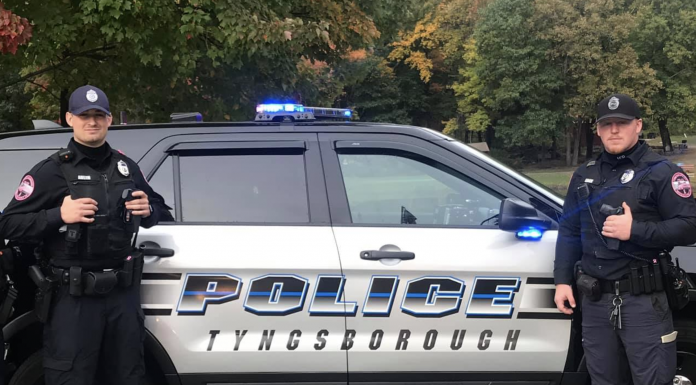BROOKLYN, Mich. (AP) — At least four people died while attending a weekend country music festival in southern Michigan, including three men who likely succumbed to carbon monoxide exposure inside a travel trailer, authorities said Saturday.
Two more men were in critical condition at a hospital from the same exposure, the Lenawee County sheriff’s office said. The five men were in their early 20s.
A concerned friend called 911 around 1:30 p.m. when he had not heard from them during the Faster Horses Festival at Michigan International Speedway, 80 miles (128.7 kilometers) west of Detroit.
They were staying at a campground outside the festival grounds in Woodstock Township.
“This tragic incident is being investigated as a suspected carbon monoxide exposure from a generator located very near the travel trailer,” the sheriff’s office said on Twitter.
Separately, state police reported the death of a 30-year-old woman, Melissa Havens of Croswell.
The cause and manner was unknown, state police said, although investigators were looking for a suspect.
“Detectives want the public to know there is no danger or threats to people attending” the music festival, state police said.
The three-day festival is scheduled to conclude Sunday. Its headliners include Luke Combs, Thomas Rhett and Jason Aldean.
2 Dead In Home, Police Investigating
July 17, 2021
Tyngsborough Police Department – Chief Richard D. Howe reports that the department is investigating after two women were found dead inside their home on Mascuppic Trail.
At approximately 10:45 a.m., Tyngsborough Police and Fire, along with Massachusetts State Police, responded to a home on Mascuppic Trail for a report of two unresponsive individuals inside the home. Upon their arrival, first responders located a 91-year-old female and 38-year-old female deceased in the home.
Shortly after their arrival, specialized devices worn by Tyngsborough firefighters during calls indicated dangerous levels of carbon monoxide in the building. The home was subsequently ventilated by firefighters.
National Grid is on scene. Officials are looking to identify the cause of the dangerous levels of carbon monoxide.
The names of the deceased are not being released at this time, pending the notification of their next of kin.
Their deaths are under investigation by Tyngsborough Police Detectives. Foul play is not immediately suspected. SOURCE: Tyngsborough Police Facebook page
Carbon Monoxide: The Invisible Killer
National Safety Council – Carbon monoxide is an odorless, colorless gas that often goes undetected, striking victims caught off guard or in their sleep.
More than 400 people in the U.S. die from unintentional carbon monoxide poisoning every year, according to the Centers for Disease Control and Prevention. More than 20,000 visit the emergency room, and more than 4,000 others are hospitalized.
This “invisible killer” is produced by burning fuel in cars or trucks, small engines, stoves, lanterns, grills, fireplaces, gas ranges, portable generators or furnaces. When the gas builds up in enclosed spaces, people or animals who breathe it can be poisoned. Ventilation does not guarantee safety.
How Can I Prevent Carbon Monoxide Poisoning?
Anyone can be at risk. The CDC says infants, the elderly, and people with chronic heart disease, anemia or breathing problems are more prone to illness or death, but carbon monoxide doesn’t discriminate.
Winter can be a prime time for carbon monoxide poisoning as people turn on their heating systems and mistakenly warm their cars in garages. So as the weather turns colder, it is important to take extra precautions.
The National Safety Council recommends you install a battery-operated or battery backup carbon monoxide detector in the hallway near each separate sleeping area in your home. Check or replace the battery when you change the time on your clocks each spring and fall and replace the detector every five years.
The CDC offers these additional tips:
- Have your furnace, water heater and any other gas or coal-burning appliances serviced by a qualified technician every year
- Do not use portable flameless chemical heaters indoors
- Have your chimney checked and cleaned every year, and make sure your fireplace damper is open before lighting a fire and well after the fire is extinguished
- Never use a gas oven for heating your home
- Never use a generator inside your home, basement or garage or less than 20 feet from any window, door or vent; fatal levels of carbon monoxide can be produced in just minutes, even if doors and windows are open
- Never run a car in a garage that is attached to a house, even with the garage door open; always open the door to a detached garage to let in fresh air when you run a car inside
Symptoms of Carbon Monoxide Poisoning
The U.S. Fire Administration has put together materials on the dangers of carbon monoxide, including a list of carbon monoxide poisoning symptoms.
Symptom severity varies depending on the level of carbon monoxide and duration of exposure. Mild symptoms sometimes are mistaken for flu.
Low to moderate carbon monoxide poisoning is characterized by:
- Headache
- Fatigue
- Shortness of breath
- Nausea
- Dizziness
High-level carbon monoxide poisoning results in:
- Mental confusion
- Vomiting
- Loss of muscular coordination
- Loss of consciousness
- Death
If you think you are experiencing any of the symptoms of carbon monoxide poisoning, go outside and get fresh air immediately. You could lose consciousness and die if you stay in the home.
When the Carbon Monoxide Alarm Sounds
The Consumer Product Safety Commission warns that you should never ignore a carbon monoxide alarm, and do not try to find the source of the gas. Instead, follow these steps:
- Immediately move outside to fresh air
- Call emergency services, fire department or 9-1-1
- Do a head count to check to account for everyone
- Do not reenter the premises until emergency responders have given you permission to do so | SOURCE



